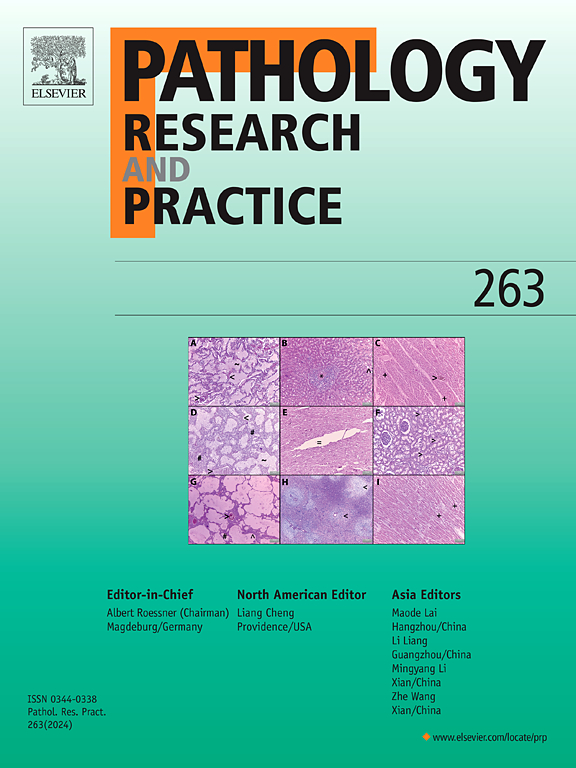Recent developments in cuproptosis of glioblastoma
IF 2.9
4区 医学
Q2 PATHOLOGY
引用次数: 0
Abstract
Glioblastoma (GBM) is the most malignant tumor within the central nervous system, attributed to its high-grade malignancy, propensity for recurrence, refractoriness to conventional therapeutic modalities, and the suboptimal efficacy of current targeted therapies. Hence, there is an urgent need to identify more efficacious molecular targets for the therapeutic intervention of GBM. The regulated cell death (RCD) has specific signaling factors and signaling pathways. Hence, targeting RCD is considered to be one of the effective targeted therapies for GBM. At present, cuproptosis is a novel form of RCD, characterized by a distinct molecular mechanism that differentiates it from apoptosis, pyroptosis, necroptosis, and ferroptosis. It is characterized by its principal mechanisms, which include copper dependency, the accumulation of acylated proteins, and the reduction of Fe-S cluster-containing proteins. These processes collectively induce proteotoxic stress, culminating in cell death. In previous studies, copper-ionized formulations have demonstrated cytotoxic effects on gliomas. Thus, the key factors of cuproptosis may be able to serve as a new target for GBM treatment. This review delves into several pivotal aspects, including the discovery of cuproptosis, the impact of copper homeostasis on tumorigenesis, the role of cuproptosis in GBM, and its potential as a therapeutic target in molecular targeted therapy for GBM. Hence, this article could reveal novel strategies for GBM treatment.
胶质母细胞瘤铜增生的最新进展
胶质母细胞瘤(GBM)是中枢神经系统中恶性程度最高的肿瘤,其特点是恶性程度高、易复发、对传统治疗方式耐受性差以及目前的靶向疗法疗效不佳。因此,亟需找到更有效的分子靶点来干预 GBM 的治疗。调节性细胞死亡(RCD)具有特定的信号因子和信号通路。因此,靶向 RCD 被认为是治疗 GBM 的有效靶向疗法之一。目前,杯状细胞凋亡(cuproptosis)是一种新型的调节性细胞死亡(RCD),其特点是具有不同于细胞凋亡、热凋亡、坏死和铁凋亡的分子机制。它的主要机制包括铜依赖性、酰化蛋白质的积累以及含 Fe-S 簇蛋白质的减少。这些过程共同诱发蛋白毒性应激,最终导致细胞死亡。在以往的研究中,铜离子化制剂对胶质瘤具有细胞毒性作用。因此,铜中毒的关键因素可能成为治疗脑胶质瘤的新靶点。这篇综述深入探讨了几个关键方面,包括铜氧化酶的发现、铜平衡对肿瘤发生的影响、铜氧化酶在 GBM 中的作用以及其作为 GBM 分子靶向治疗靶点的潜力。因此,这篇文章可以揭示治疗 GBM 的新策略。
本文章由计算机程序翻译,如有差异,请以英文原文为准。
求助全文
约1分钟内获得全文
求助全文
来源期刊
CiteScore
5.00
自引率
3.60%
发文量
405
审稿时长
24 days
期刊介绍:
Pathology, Research and Practice provides accessible coverage of the most recent developments across the entire field of pathology: Reviews focus on recent progress in pathology, while Comments look at interesting current problems and at hypotheses for future developments in pathology. Original Papers present novel findings on all aspects of general, anatomic and molecular pathology. Rapid Communications inform readers on preliminary findings that may be relevant for further studies and need to be communicated quickly. Teaching Cases look at new aspects or special diagnostic problems of diseases and at case reports relevant for the pathologist''s practice.

 求助内容:
求助内容: 应助结果提醒方式:
应助结果提醒方式:


